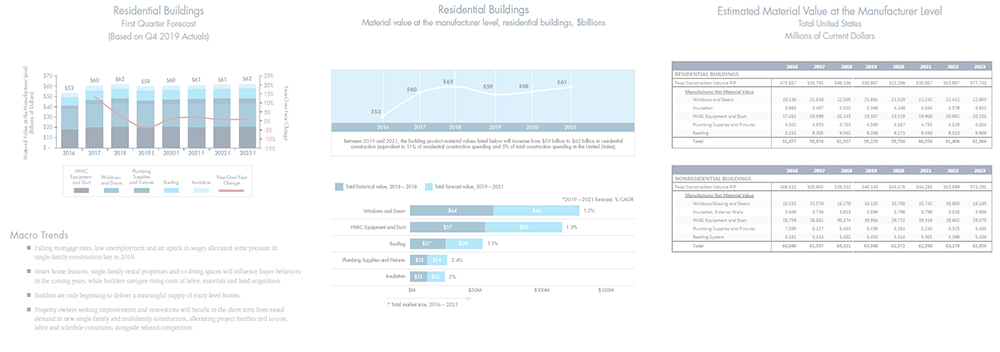2020 Building Products Market Update
It’s Time for Building Product and Material Manufacturers to Drive the Digital Age
Building product and material manufacturers have an opportunity to be leaders in market-facing technology adoption and create stickiness and loyalty with their customers. Here’s why now is the time to make the move.
By Paul Giovannoni

Digital transformation isn’t easy for any industry. Even tech-savvy organizations struggle with issues like employee pushback, age-old cultural norms, the cost of integrating new technologies, and a lack of digital expertise needed to lead these initiatives. Despite the challenges, the push to transform organizations, processes and customer experiences through the use of technology continues. That means organizations can either get onboard or risk being left behind. This is especially true right now in the construction industry.
This presents opportunities and challenges for building product and material manufacturers, as the current state of digital transformation varies widely at all steps of the construction value chain they serve. For example, some contractors, architects and engineers are well to the right on the adoption curve (e.g., DPR, Fortis, McCarthy and Katerra), while the vast majority of the market lies somewhere in the middle. Some stragglers are lagging behind the pack and hanging far to the left on the adoption curve.
In this article, we explore the key issues that keep manufacturers from developing and adopting technology, explain keys to a successful technology strategy, and show why now is the time for manufacturers to begin heading down the path to successful digital transformation and engagement.
From Laggard to Leader
To no one’s surprise, the construction industry is a “laggard” in terms of its adoption and promotion of technology. And it’s not only financial investment and organizational commitment to technology that is lacking; receptiveness to technology as a whole is also limiting adoption. Stuck in their old ways of doing things, many companies are reluctant to change processes, train their people, and pioneer more innovative approaches in construction. As a result, even the companies that are leading the pack with digital transformation can’t carry the whole industry.
For decades, manufacturers have been dealing with secondhand information in a game not too different from the “telephone” game that children play. Contractors talked to distributors or sales reps, who then conveyed their interpretation of the information to the manufacturers. Unsure of what their end customer really wanted—or what their key pain points were—manufacturers were left to their own devices and a lot of guesswork to figure out the answers to those questions.
This long-standing system creates many challenges for manufacturers, one of which being how they develop and implement market-facing technology to engage their customers. Nearly all our manufacturing clients know they must act and have a technology strategy, but most don’t know what it should be because they don’t know where their customers are along the technology adoption spectrum or how to add value through technology. Oftentimes, when manufacturers do get the direct interface to speak to contractors, the contractors cannot articulate what they want regarding technology. This uncertainty in part creates a hesitation to act or uncertainty on what to actually do. This leaves the door of opportunity open wide for the forward-looking manufacturers willing to take the leap through effectively harnessing technology in order to strengthen customer relationships and ultimately be the preferred supplier.
Stickier Customer Relationships Wanted
The manufacturer that moves too slowly could get left behind as its competition becomes easier to work with, provides additional services, creates “stickier” customer relationships or simply builds a better mousetrap through...

About the Authors
 Paul Giovannoni is a principal within FMI’s Strategy practice and his primary focus is partnering with members of the building products industry by assisting them in developing their strategies relating to growth, value creation and new product launches. Paul’s extensive experience working with many of the most well-respected manufacturers and distributors in the industry, combined with his deep relationships in the contractor community, enables him to bring a comprehensive perspective of the market to his clients. Paul may be reached at [email protected].
Paul Giovannoni is a principal within FMI’s Strategy practice and his primary focus is partnering with members of the building products industry by assisting them in developing their strategies relating to growth, value creation and new product launches. Paul’s extensive experience working with many of the most well-respected manufacturers and distributors in the industry, combined with his deep relationships in the contractor community, enables him to bring a comprehensive perspective of the market to his clients. Paul may be reached at [email protected].